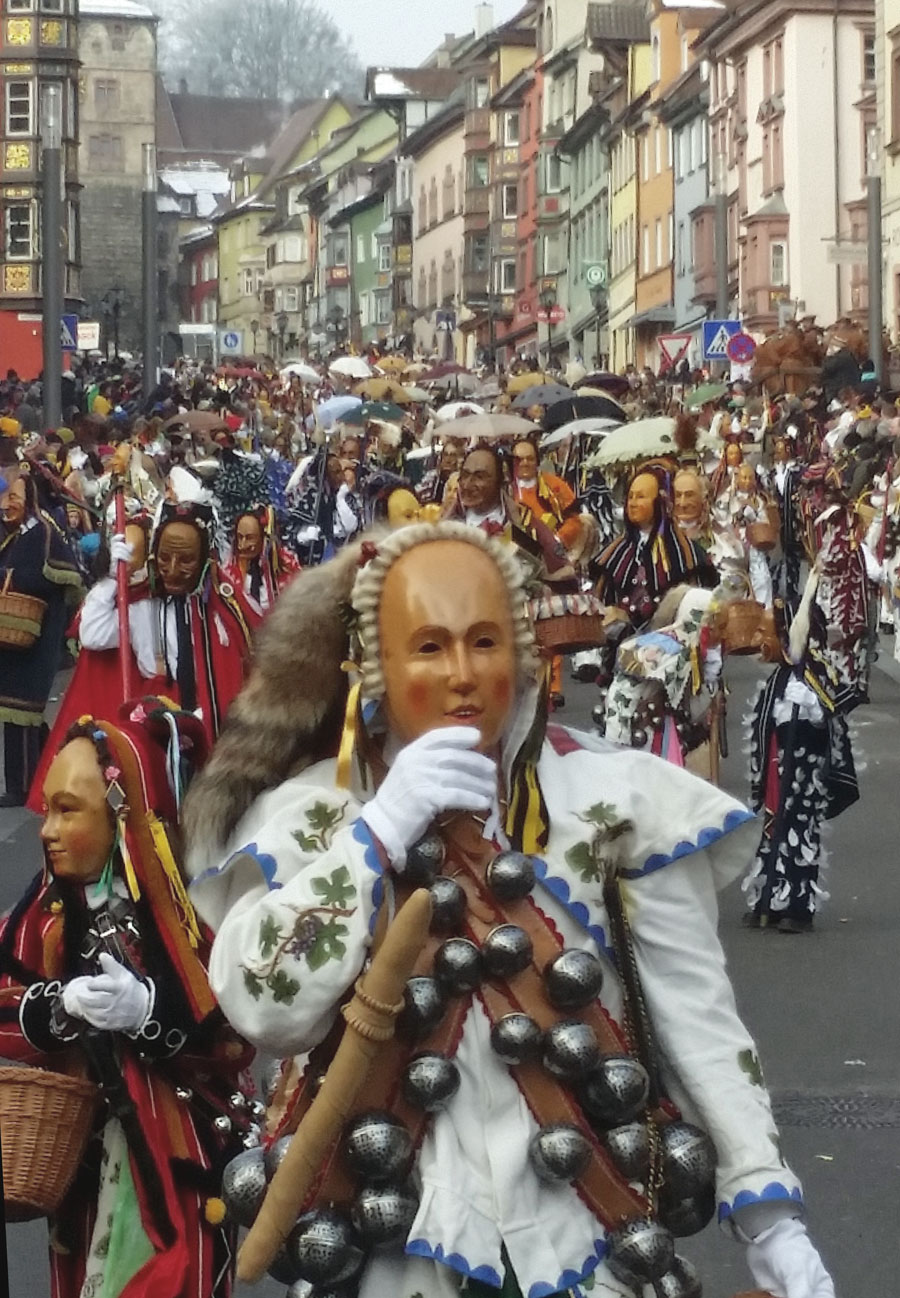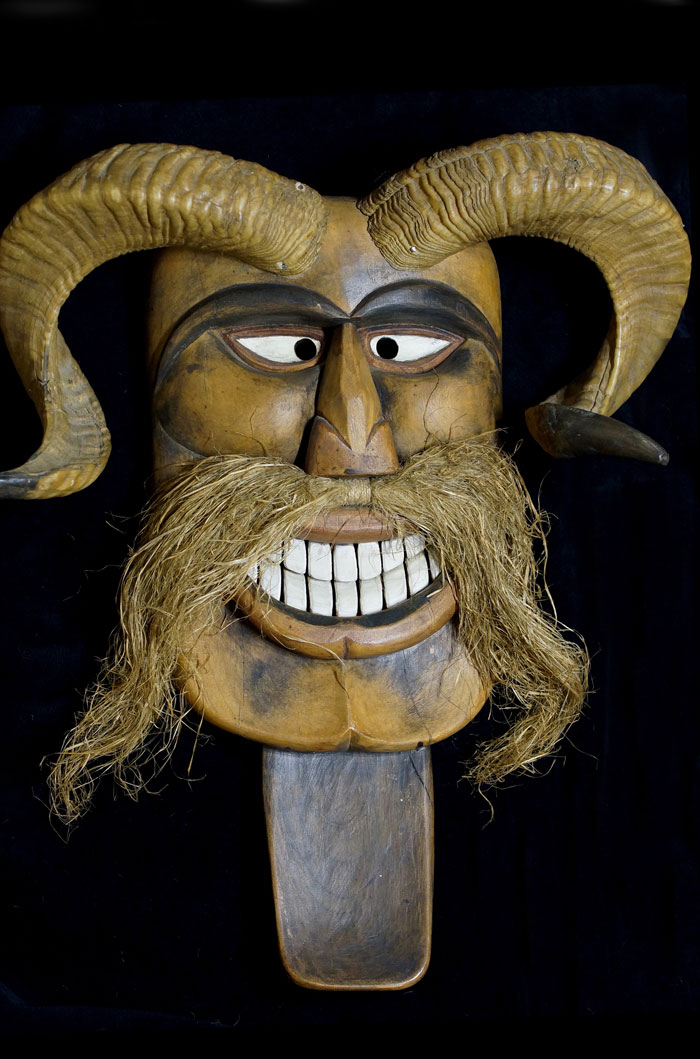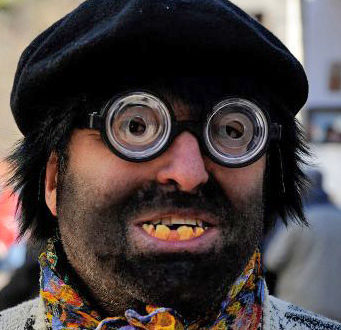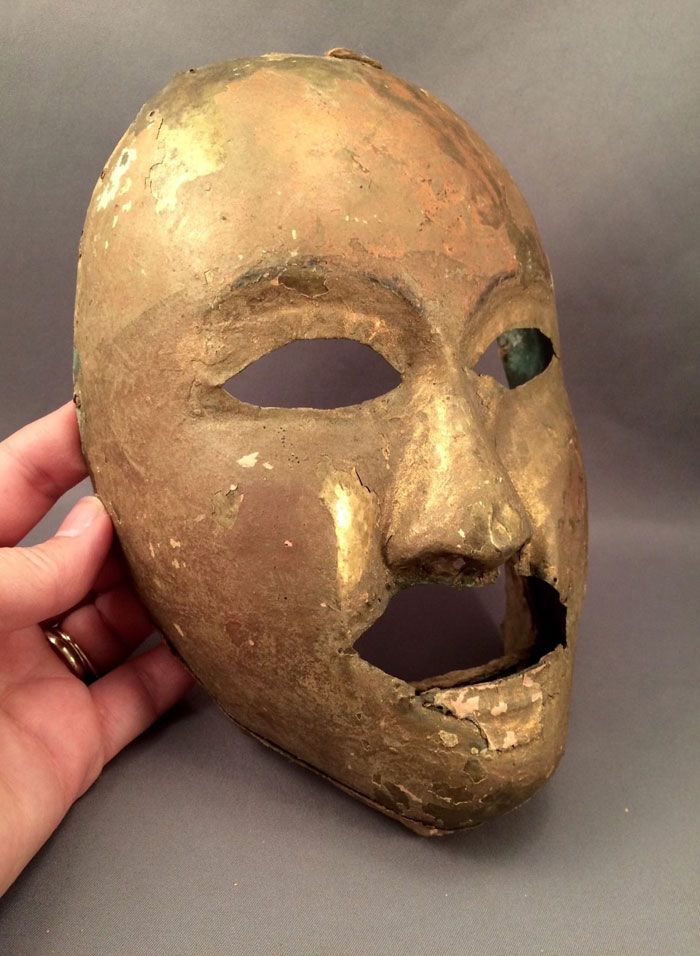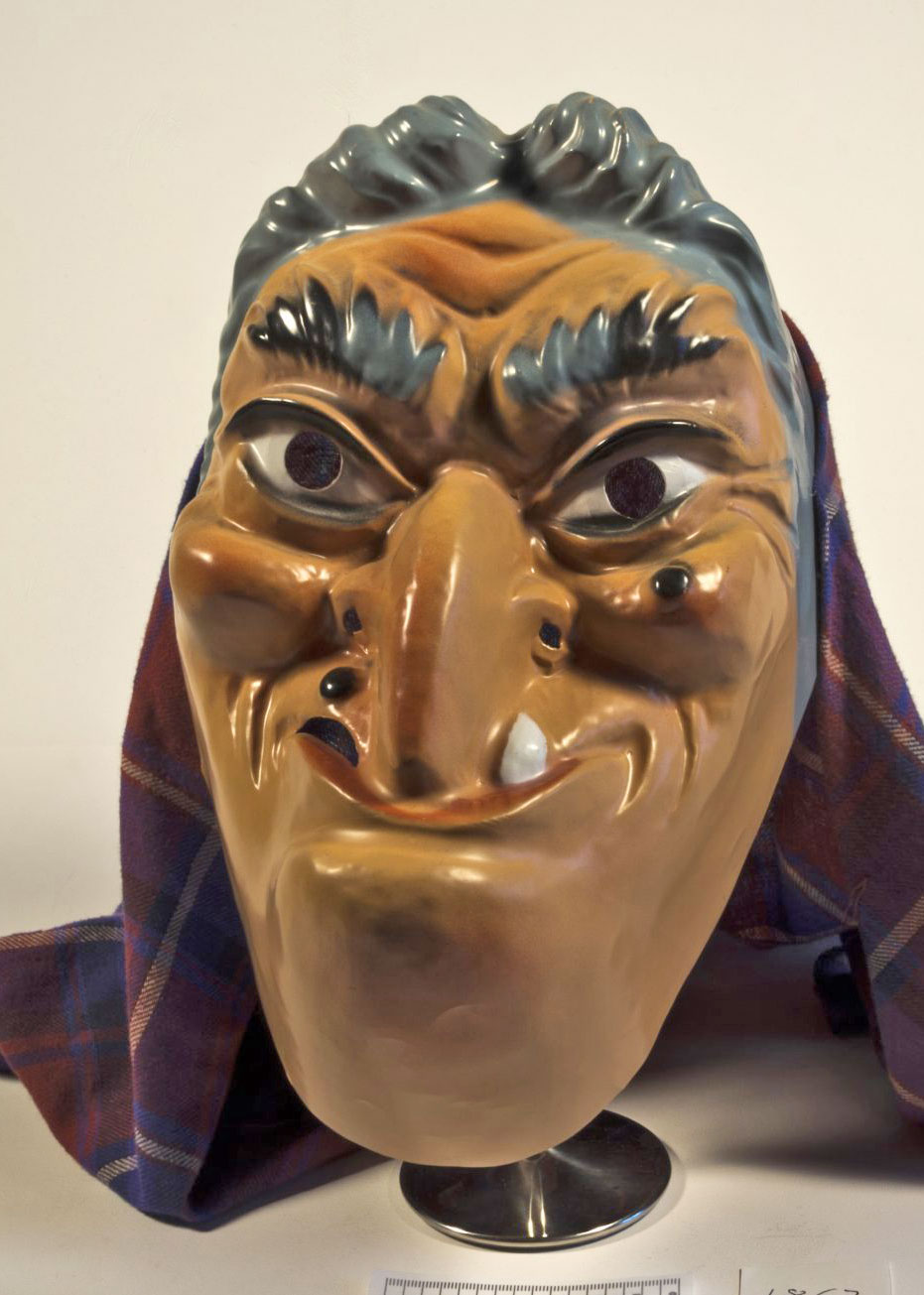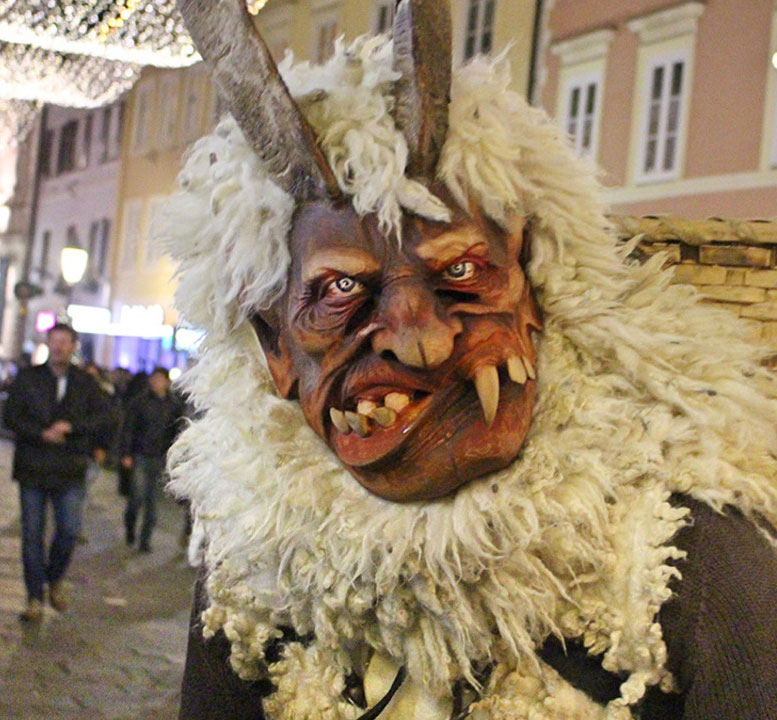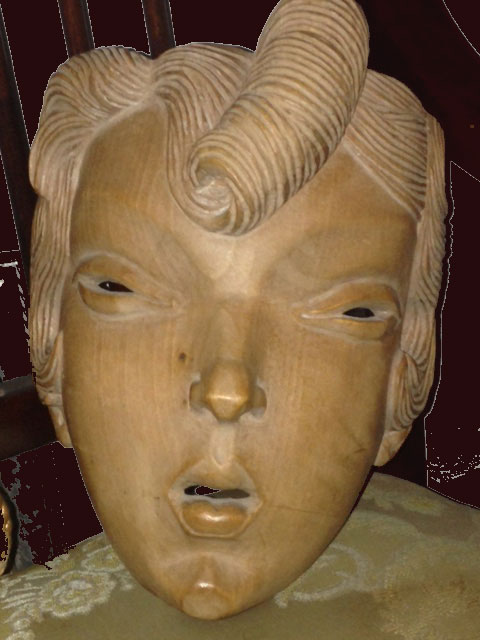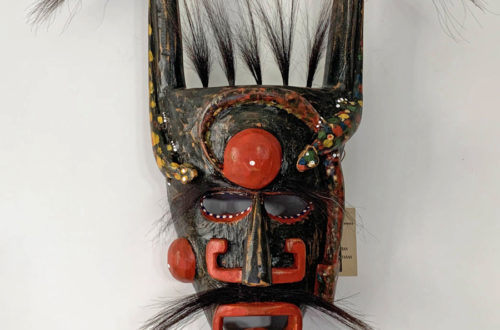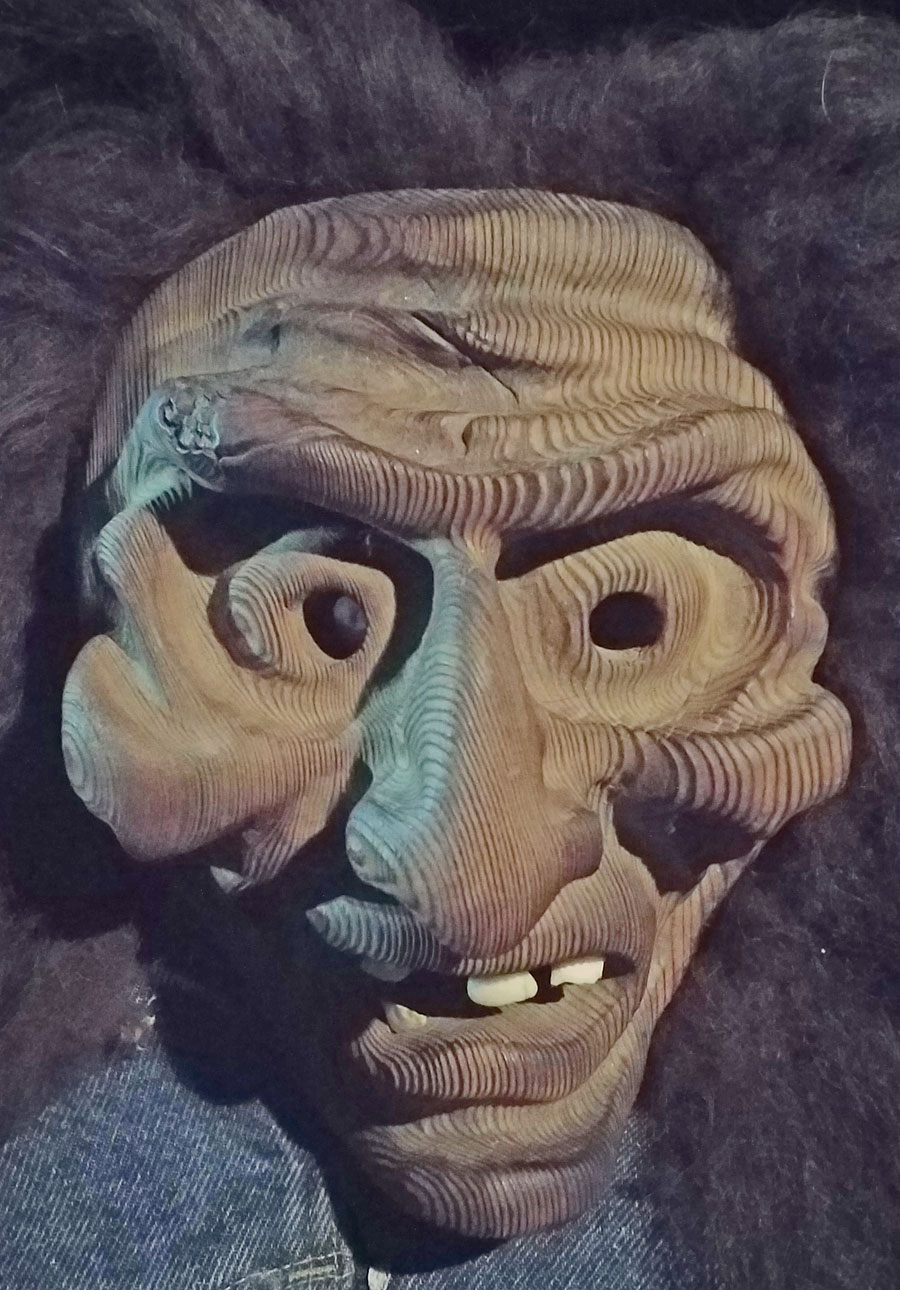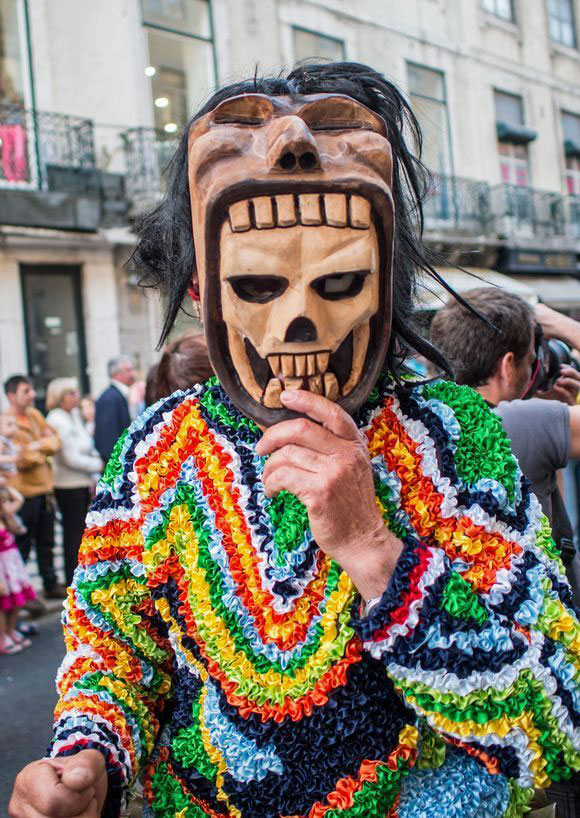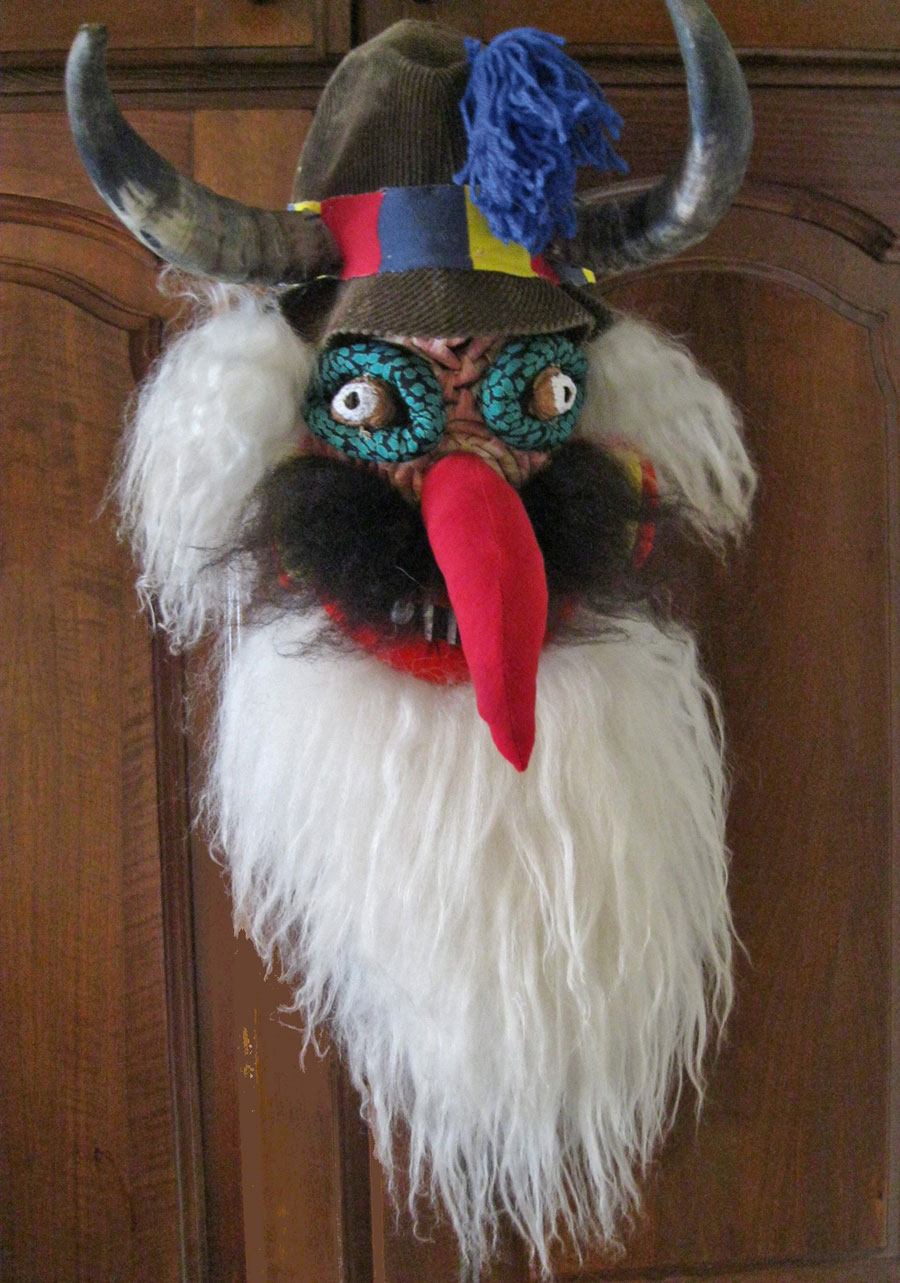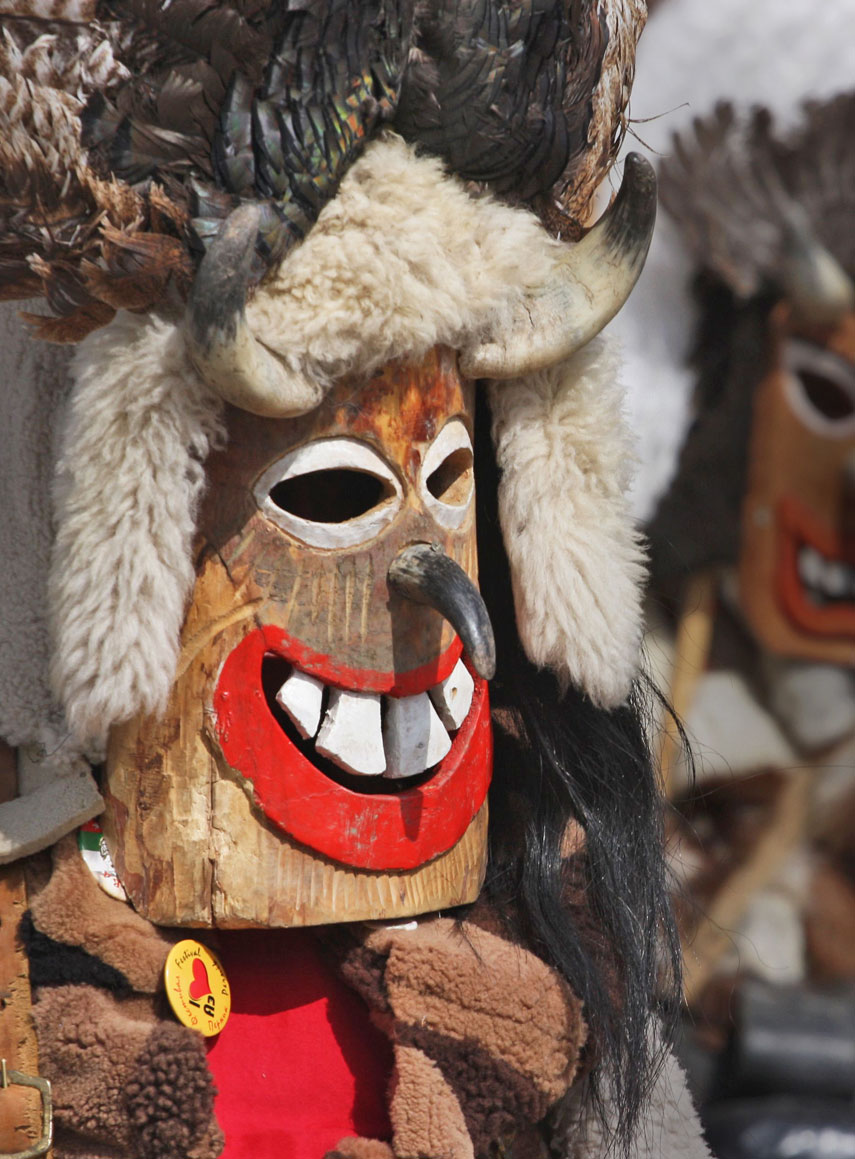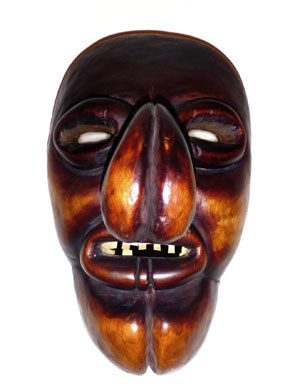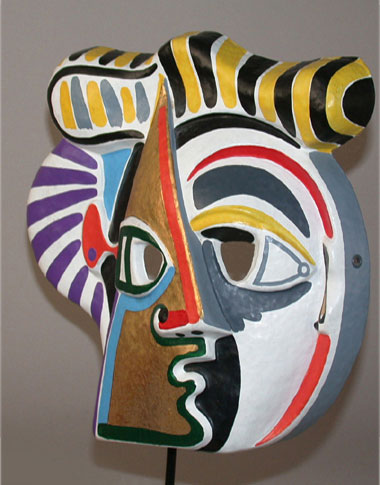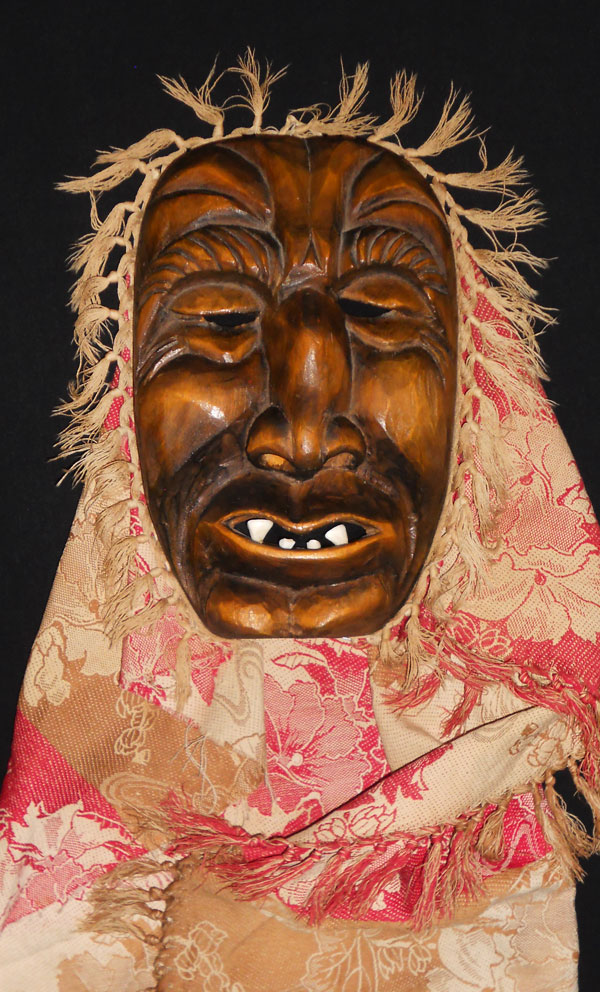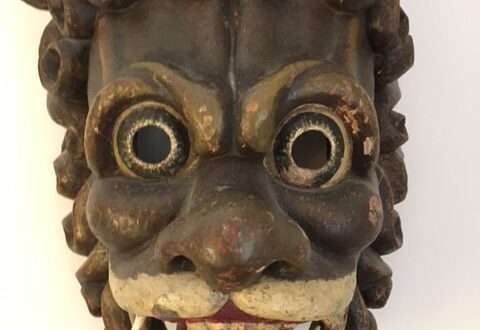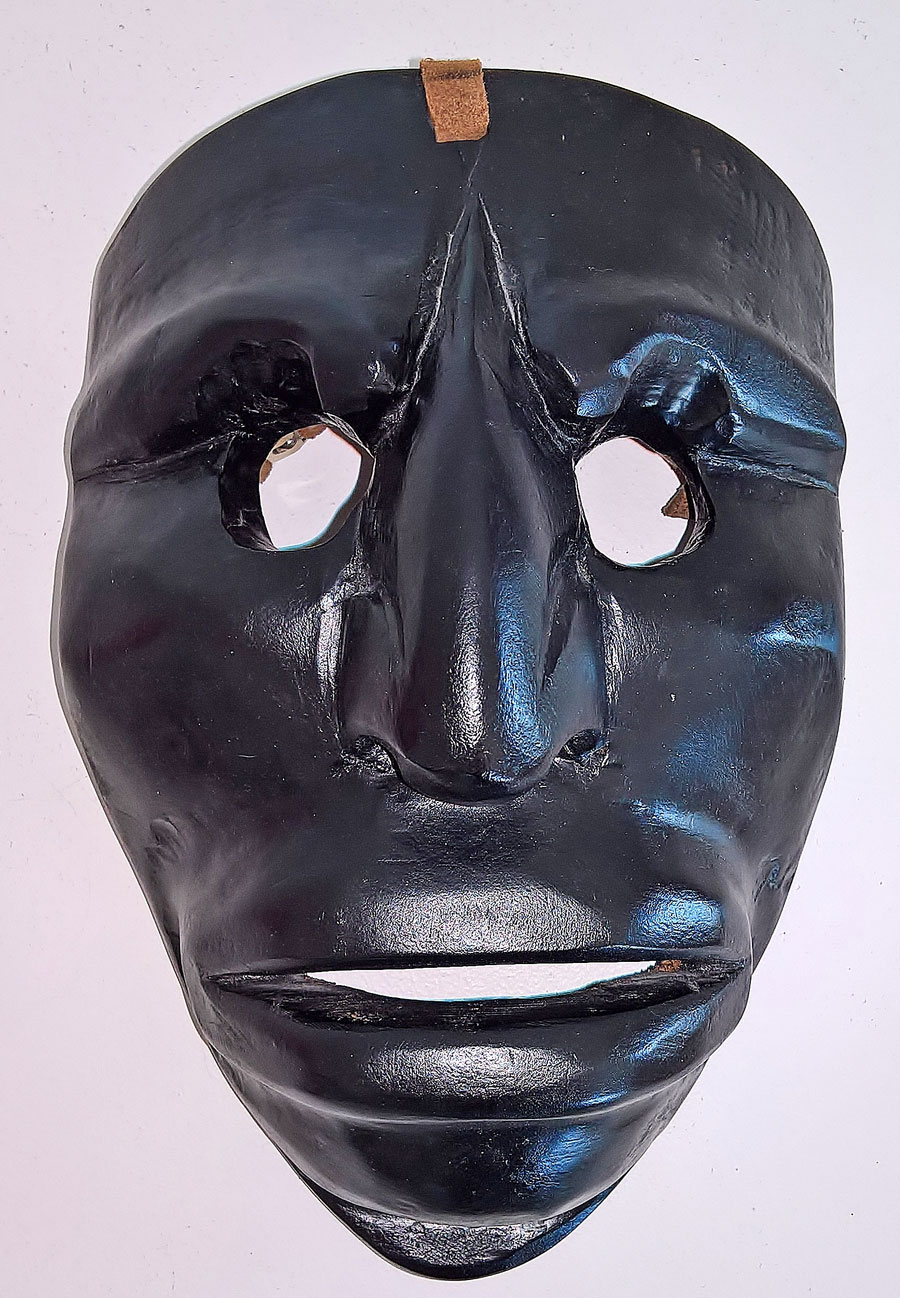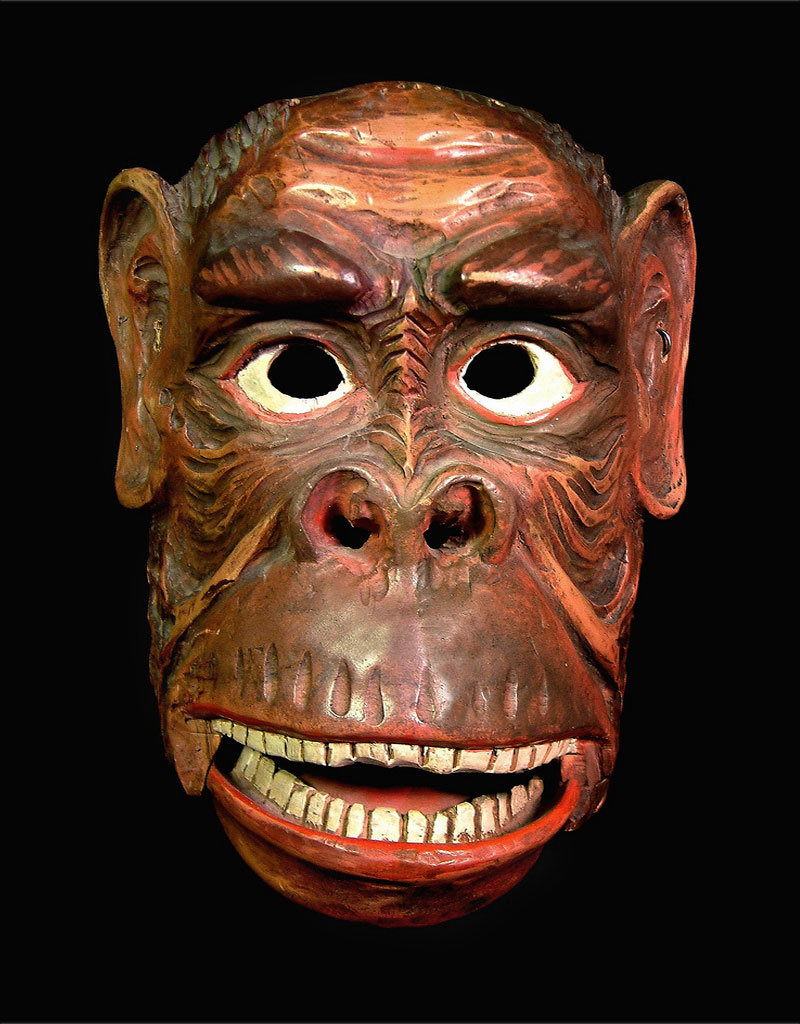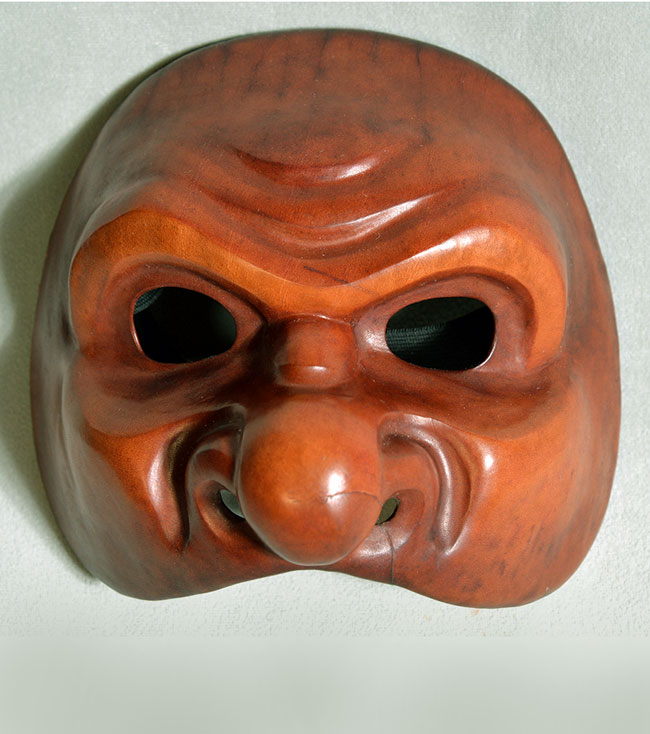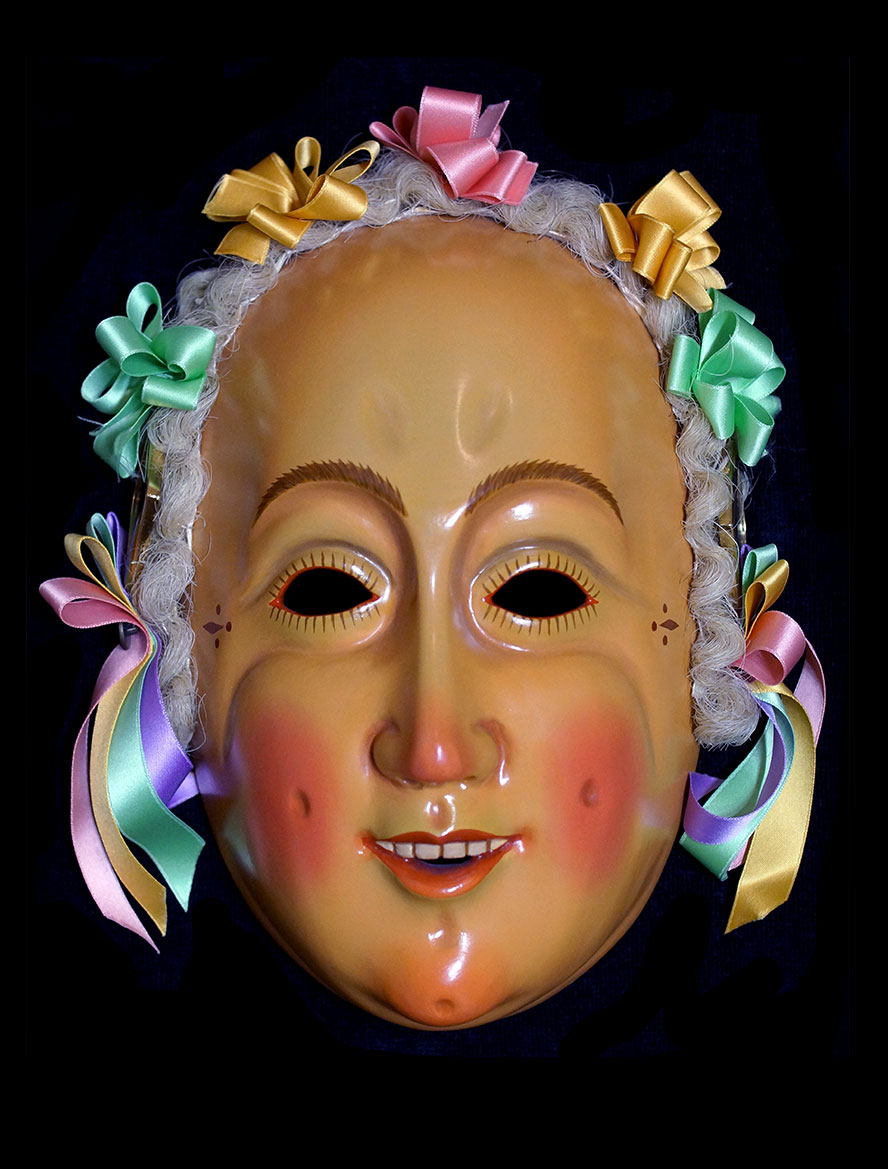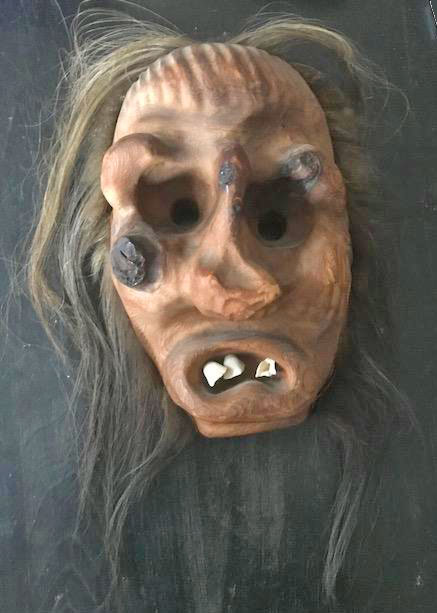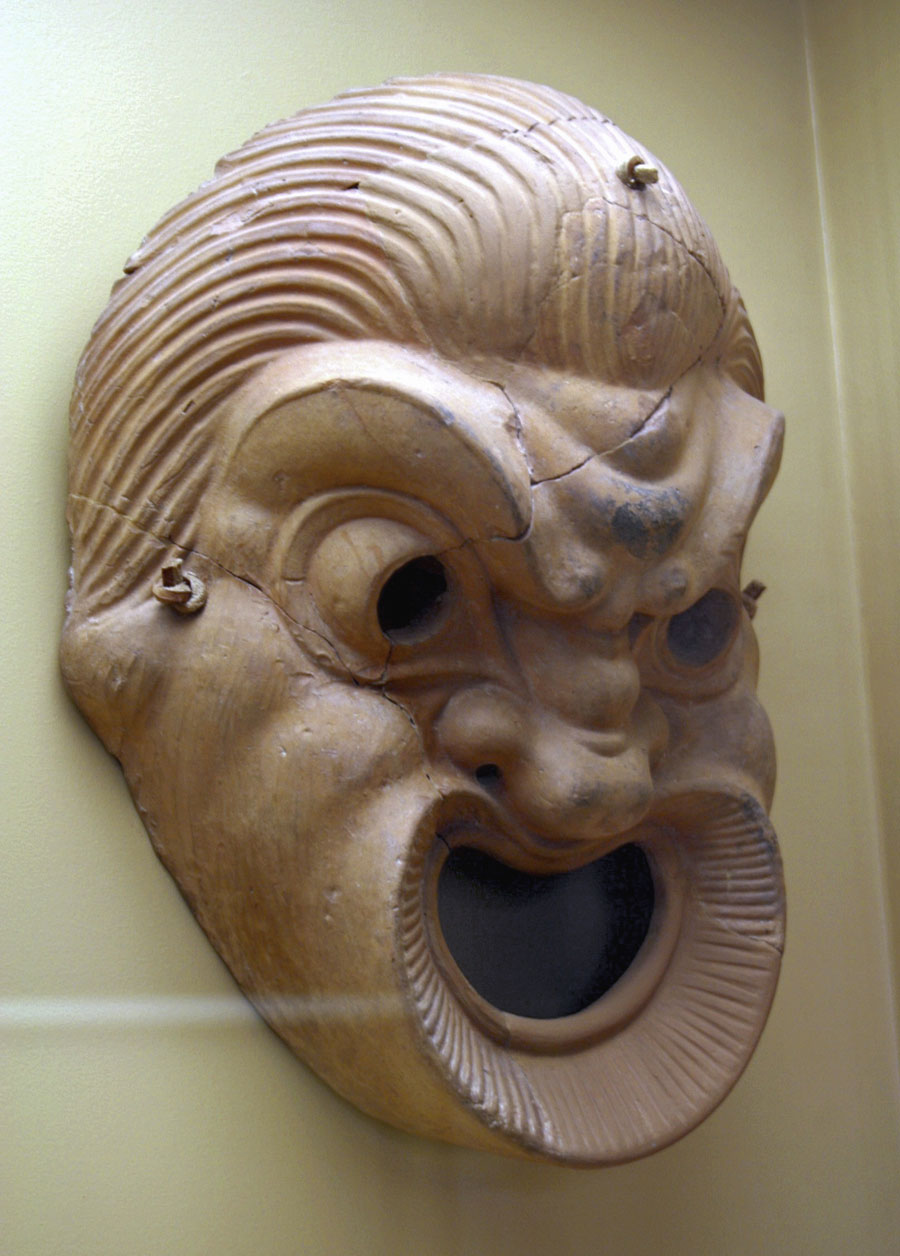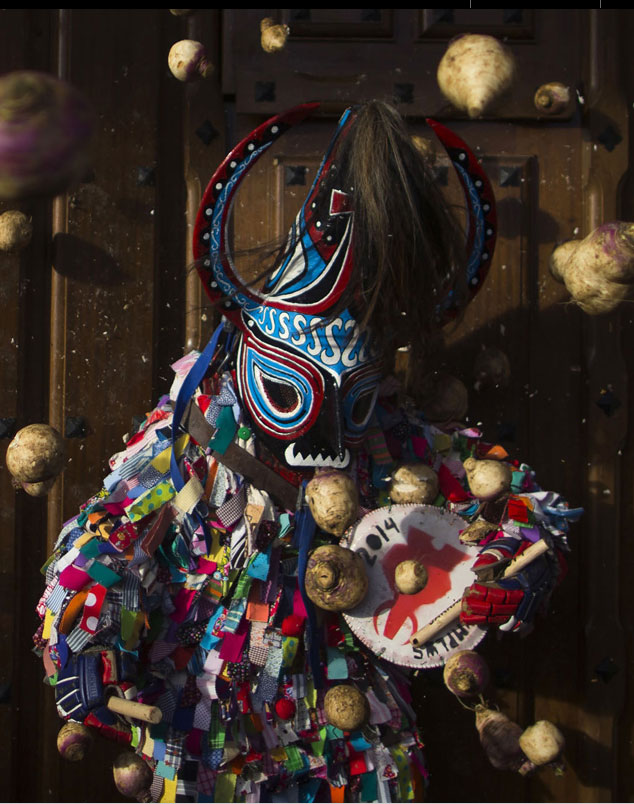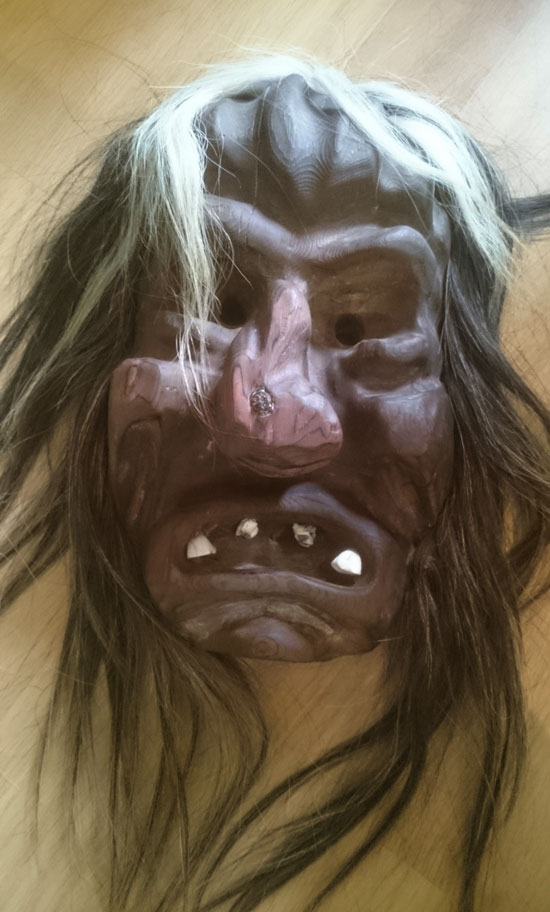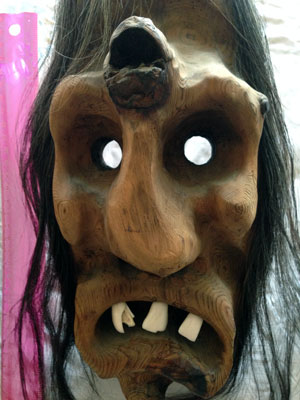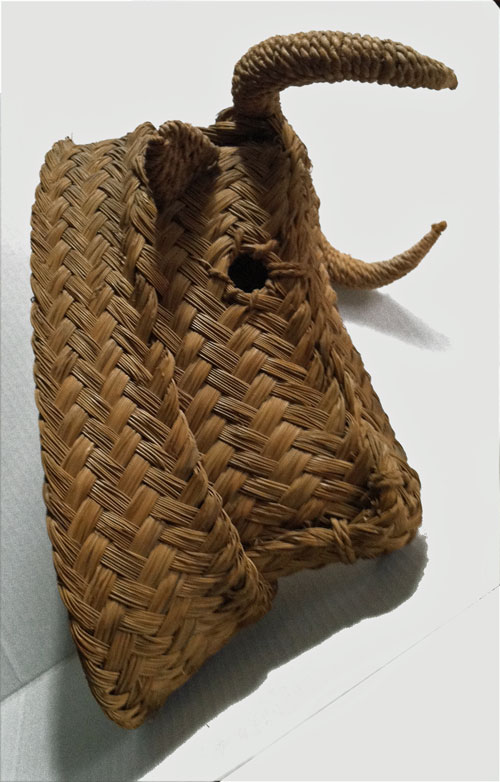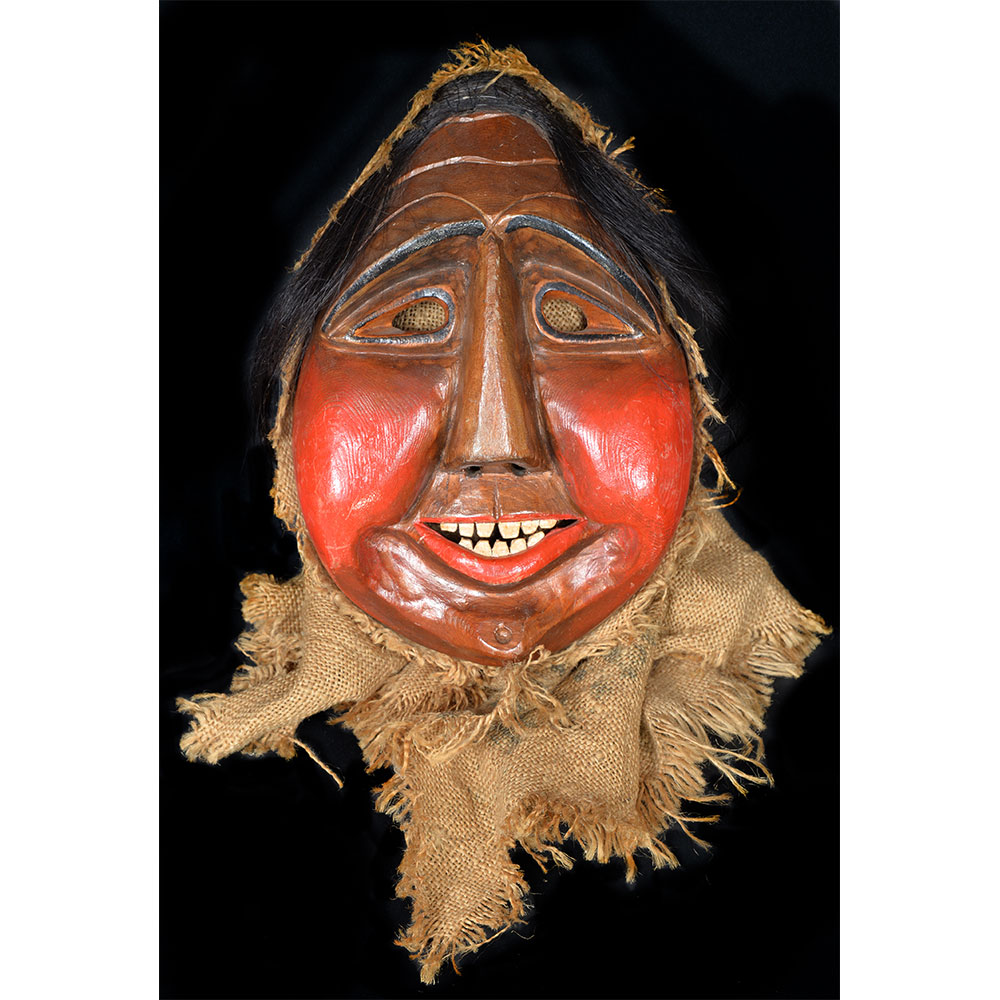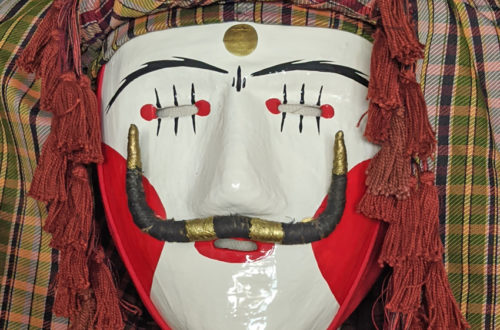Q: In Rottweil, a small town in the South of Germany, they have every year in February a procession with traditional old masks. It’s called the “Rottweiler fool’s procession.” Axel, 1551 A: Thank you. I found a photo on the internet of this event. Also, on May 4, 2018, I posted mask #1354 which was described as follows: TITLE: Fasnet Gschell Mask COUNTRY: Germany SUBREGION: Rottweil ETHNICITY: Swabian German DESCRIPTION: Gschell Narro MAKER: Helmut Kramer CEREMONY: Fasnet (Carnival) AGE: ca. 1970s-1980s MATERIAL: wood, paint You can access two nice close-ups of these famous masks on this website.
-
-
German witch mask
Our witch carnival mask from Cologne is a molded plastic grey-haired hag face, with a blue and red headscarf and elastic band to hold it for wearing. The Cologne carnival begins on a Thursday six weeks before Easter. It is a time of riotous celebration before the start of Lent. The first day is the Women’s Carnival, and witch masks (although worn throughout the Carnival) are worn on that day in particular. They represent both the benign Wise Woman and the Wicked Witch of German folk tales. In Germany most homes have a ‘house witch’– a fabric model of a witch to bring them good luck, often with a small…
-
Tschäggättä mask from the Swiss Alps
Q: The mask was found in an attic in North Carolina. It is roughly 10 inches tall (minus the hair) and 8 inches wide. It appears to have real teeth. The number 18 is stamped in the back. Josh, 1515 A: This copy has been removed because it was incorrect.
-
Bulgarian kukeri masks
In a practice dating back millennia, Bulgaria’s kukeri dancers don dramatic costumes to dispel evil and invite good. The ritual is a public one, profoundly ancient, full of spectacle and metaphor. Around early winter or midwinter, groups of kukeri (pronounced KOO-kuh-ree) don elaborate costumes—complete with fantastical masks and belts of massive metal bells—and accompany musicians throughout the village, dancing rhythmically to drive away evil and invite good. They are “multipurpose” rituals: The bells clanging and the costumes shocking faces divert the evil eye, but the mummers’ dancing path throughout the village also invoke the fertility of people, animals, and agriculture. Kukeri rituals have also served as coming-of-age ceremonies for young…
-
Masks we don’t see often
Q: I’m trying to find out who made a particular mask. It was a cubist mask featured in Eyes Wide Shut, and I recently found a nearly identical mask linked from your site on Pinterest (though the link on your site is now dead). The image of the mask from Eyes Wide Shut is attached below. David, 1438 A: This mask can be found on page 107 of Masks of the World by Ibold and Yohn. It was purchased from a costume shop in France or Italy about 20 years ago. It is 10 inches high and made of very strong papier mache so it can be worn many times.…
-
Sardegna carnival mask from Italy
Q: I bought those 2 masks 10 years ago in Mamoiada, Sardegna. These are the 2 characters of this traditional carnival, the Mamuthones and the Issohadores. The masks are new. The procession itself is almost hypnotic, it is worth the trip, unfortunately in the winter, end January till early February. I just sent you these masks, because I did not see them in your book, I recently bought on Amazon. Jean, 1418 A: Only the black mask is shown, not the brown one. I try to limit the blog to just one mask. Carnivals in the island of Sardinia are a bit different from those in other parts of Italy…
-
Rare chimpanzee mask from the Tyrol
Q: I’ve had this mask for 10 years, and paid approx. $80 at an online auction. I’ts a Fasnacht mask from the Tyrol region of Austria. I liked the expressive carving and the hinged jaw. Not sure of it’s age, but I thought I would share it with you since it’s unusual, and I haven’t seen any similar masks online. Dan, 1400 A: This carved wood carnival mask is obviously from the Tyrol. That means it could be used in Austria, South Germany, Eastern Switzerland or Northern Italy at “Fasnacht” to chase away winter. I can see it mixed in with those crazy Krampus characters. But it is very rare.…
-
Ancient Greek theater mask
Education— It could be over 2000 years old. Made of fired clay, it was found in pieces but has been repaired. I don’t think we can find any western European masks that are older. Do you enjoy seeing ancient masks? Read books and visit museums. Careful reproductions can be purchased on the internet for reasonable prices. Identification— Most of the photos I receive are from people who know very little about masks and need more information. Also, there are collectors and dealers who specialize and occasionally stumble on a mystery mask that is not in their field of expertise. Value— People want to know how much their new mask is…
-
Gschell mask from Germany
Q: I was wondering how a German mask is made? Jimmy, 1354 A: That was a beautiful photo you sent, but a little low in resolution. So the main photo is a female version of yours from the Second Face museum of cultural masks. Here is the beginning of their description. TITLE: Fasnet Gschell Mask COUNTRY: Germany SUBREGION: Rottweil ETHNICITY: Swabian German DESCRIPTION: Gschell Narro MAKER: Helmut Kramer CEREMONY: Fasnet (Carnival) AGE: ca. 1970s-1980s MAIN MATERIAL: wood OTHER MATERIALS: oil paint; horsehair; satin ribbons; mirrors Yours (second mask) is a male version of the same mask. To learn how they are made, do a Google search. Helmut Kramer was…
-
Romanian traditional mask
This Romanian ritualistic mask from Moldova always has an unique appearance of a big beard and long red nose. They’re used over a wide area, from the Banat to Moldavia and from Oltenia to Maramures. The dances are considered the most picturesque events and tourists love them. They are a meaningful component of the folk customs celebrated in villages for the coming of the New Year, funerals, agricultural and hunting rituals.These dances originate from the pre-Christian times when the never ending struggle between good and evil had an impact on everyone. After Dan got his excellent German mask for so little money, I took a look at some other European…
